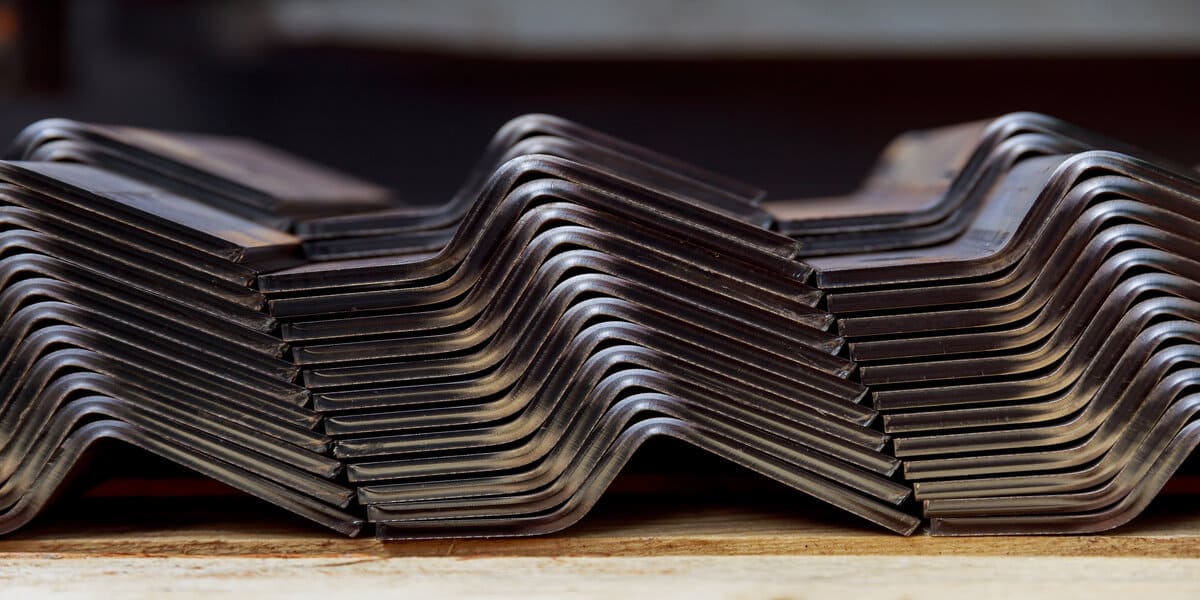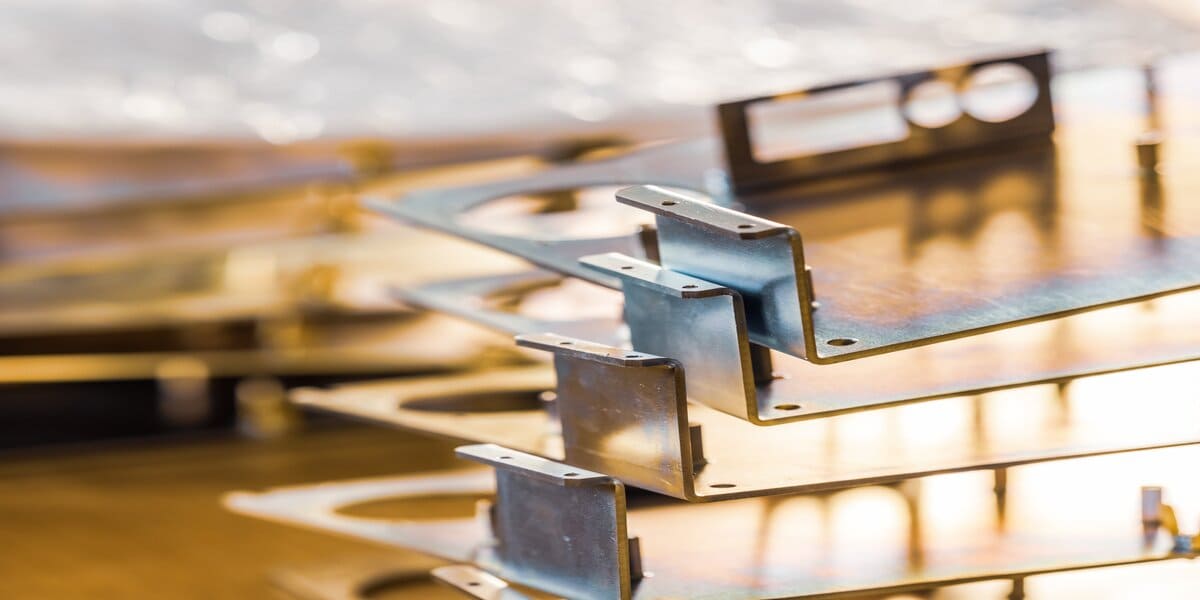Sheet metal bending is a process that has been used for centuries to transform flat sheet metal into various shapes and forms. The technique involves using a machine with a punch and die to apply force on the sheet metal, causing it to bend at precise angles. This process is widely used in manufacturing, construction, and automotive industries, making it an integral part of our everyday lives. With the constant technological advancements, sheet metal bending has also seen big improvements and innovations.
One of the most notable changes in sheet metal bending is using computer-aided design (CAD) software to create precise designs. This creates patterns that can be formed with greater accuracy and efficiency. CAD software also removes the need for manual calculations and measurements, reducing the chances of errors and increasing productivity. Integrating computer-aided manufacturing (CAM) software with bending machines has also improved the process, allowing for automated bending and reducing production time.
The Evolution of Sheet Metal Bending Techniques
Over the years, sheet metal bending techniques have met industries’ demands. In the early days, simple hand tools were used to bend metal sheets, which required high skill and physical strength. As technology advanced, mechanical press brakes replaced manual labor, allowing faster and more precise bending. But, these machines still had limitations when it comes to complex shapes and angles.
With the introduction of hydraulic press brakes in the mid-20th century, sheet metal bending took a big leap forward. These machines could exert more force, allowing thicker and larger sheets to be bent. They also had adjustable dies and backstops, making it easier to produce consistent bends. As computer technology became more widespread, CNC (computer numerical control) press brakes were introduced, allowing for computer-controlled bending with high precision and repeatability.

The Rise of CNC Technology in Sheet Metal Bending
With the increasing demand for customized and intricate designs in various industries, CNC technology quickly became the standard for sheet metal bending. These machines are equipped with sophisticated software to create complex 3D models and generate precise tool paths for bending. This has opened up a new world of possibilities for designers and manufacturers, allowing them to create unique and innovative products.
Also, CNC technology has greatly improved the efficiency and accuracy of sheet metal bending, reducing production time and costs. The software can also simulate the bending process before production, allowing for any necessary adjustments without wasting materials. This has increased productivity and reduced material waste, making sheet metal bending more environmentally friendly.
Innovative Techniques in Sheet Metal Bending
Digital Bending Simulation
Sculpting metal is as much about art as science, a delicate balance of technique and raw material. In the past, metal bending relied heavily on trial and error, leading to wasted material and less-than-perfect results. However, the advent of digital bending simulations has revolutionized this process. Now, fabricators can visualize the bending process and test feasibility before even touching a piece of metal.
Tools like AutoForm and Pam-Stamp use complex algorithms to imitate metal deformation during bending. By inputting material properties, desired bend angles, and forces, these simulations provide accurate predictions of how a metal sheet will behave, greatly reducing setup time and scrap. Fabricators can iterate on the design in the virtual space, continually refining their approach until they achieve the desired outcome. This saves time and money and pushes the boundaries of what is possible by experimenting with more intricate and challenging designs.
Robotics and Automation
The integration of robotics into sheet metal bending has revolutionized mass production. Robotic press brakes, equipped with sensors and computer vision, can swiftly and accurately bend metal according to pre-programmed designs. Robots’ precision and repeatability ensure consistent part quality and offer flexibility in switching between different product types with minimal setup.
Beyond the bending, robotic arms with quick-change tooling are increasingly used to handle and manipulate the metal sheets with speed and finesse. Automated systems can load and unload materials, apply tooling, and carry out secondary operations, reducing the need for human intervention and the associated risks in the manufacturing environment.

High-Speed and Multi-Axis Press Brakes
Traditional press brakes give way to high-speed, multi-axis counterparts that offer increased efficiency and a broader range of capabilities. High-speed press brakes can bend astonishingly, sometimes cutting cycle times in half. This translates to greater productivity and opens up new possibilities for just-in-time manufacturing, enabling companies to respond more dynamically to market demands.
Multi-axis press brakes, capable of bending sheet metal in multiple dimensions, are revolutionizing the fabrication of complex shapes and intricate contours. By incorporating crowning systems that automatically adjust for deflection under load, these machines ensure uniform bends across the entire workpiece. When combined with advanced tooling like hydraulic clamping and precision CNC-controlled back gauges, multi-axis press brakes represent the pinnacle of innovation in the sheet metal industry, enabling unparalleled accuracy and efficiency in the creation of complex parts and components.
Environmental Considerations
Innovation is not just about performance; it’s also about responsibility. The sheet metal bending industry focuses more and more on environmental sustainability, introducing new technologies and materials that minimize its ecological footprint. Waterjet cutting, for example, employs a high-pressure stream of water and sand to cut metal, reducing the generation of hazardous fumes and waste materials.
The emergence of bio-based lubricants and coolants also responds to the demand for greener production processes. These products safeguard the workplace environment and contribute to a more sustainable manufacturing ecosystem by reducing dependence on fossil fuel-derived lubricants.
With each technological leap, sheet metal bending is reaching new heights. Digital simulations, robotics, high-speed presses, and sustainable practices are not just add-ons but integral components of a future-forward industry. They streamline processes, boost efficiency, and expand creative possibilities while aligning with global sustainability goals.
Fabricators and manufacturers who stay abreast of these innovations will not only lead the pack in terms of product quality and design flexibility. Still, they will also play a major role in spearheading a more sustainable and responsible manufacturing sector. The future of sheet metal bending is anything but rigid—bending and shaping with the dynamic forces of progress.

Frequently Asked Questions
How has technology influenced sheet metal bending?
Technology, particularly in digital simulations and robotics, has greatly improved sheet metal bending processes’ accuracy, efficiency, and flexibility.
What are some benefits of using digital bending simulations?
Digital bending simulations allow fabricators to visualize and iterate on designs before physically manipulating the metal, saving time and reducing material wastage.
What role do robotics play in sheet metal bending?
Robotics have revolutionized mass production by providing precise and consistent bending capabilities and automating tasks such as material handling and secondary operations.
The industry has increasingly focused on sustainability, incorporating technologies like waterjet cutting and bio-based lubricants to minimize environmental impact.
